1. What is Bilingualism?
1.1. Is the ability of speaking and understanding two or more languages.
2. Degree of bilingualism
2.1. Balanced of bilingualims
2.2. Passive / Recessive Bilinguals
2.3. Semilinguals / Limited Bilinguals
2.4. Dominant Bilinguals
3. Context of Bilingual Language Acquisition
3.1. Primary context / natural bilingualism
3.2. Secondary context / school bilingualism
3.3. Naturalistic fused setting
3.4. Naturalistic separate setting
3.5. Elective bilinguals
3.6. Circumstantial bilinguals
4. Age of acquisition
4.1. We have a superior language learning capacity early in life which will disappear or decline with maturation.
4.1.1. According to many, learning a second language becomes more difficult when you are adult.
4.1.2. Learning a second language may be easier as a child.
4.1.3. However there are some exceptions.
4.2. Possible Factors
4.2.1. Neurological
4.2.2. Aptitudes
4.2.3. Nature of exposure
4.2.4. Identity
4.2.5. Motivation
5. Types of Bilingualism
5.1. Compound Bilingual
5.1.1. An individual who learns two languages in the same environment so that he/she acquires one notion with two verbal expressions.
5.2. Coordinate Bilingual
5.2.1. Acquires the two languages in different contexts (e.g., home and school), so the words of the two languages belong to separate and independent systems.
5.3. Sub-coordinate bilingual
5.3.1. One language dominates
6. Five Important variables in relation to bilingualims:
6.1. Degree of bilingualims
6.2. Context of bilingual language acquisition
6.3. Age of acquisition
6.4. Domain of use of each language
6.5. Social orientation
7. Advantages
7.1. Higher density of the gray matter that contains most of neurons and synapses.
7.2. more activity in certain areas when speaking a second language.
7.3. Intense brain activity bilingual throughout life.
7.4. It helps delay the appearance of diseases such as Alzheimer's and dementia for up to five years.
8. Domains of use
8.1. The different spheres of influence in a speaker’s life:
8.1.1. Family
8.1.2. Friendship
8.1.3. Religion
8.1.4. Education
8.1.5. Employment
8.2. Interlocutors
8.2.1. language relationship tends to evolve naturally.
8.3. Place or Location
8.3.1. work vs. home; physical location like neighborhoods
8.4. Topic
8.4.1. Language of technical discourse or cooking, gardening, etc.
9. Misconceptions
9.1. "A real bilingual knows both languages perfectly.”
9.1.1. They may have a very wide knowledge of both languages, but they will never know everything and they will have trouble landing because a specific language will be used only in one context and there will always be one where they perform better.
9.2. “My child will just pick up the language if he hears it”
9.2.1. People often think that children will pick up languages if they’re simply exposed to them. However research shows that it takes consistency, commitment, and creative reinforcements, inside and outside the home, for children to learn and maintain a second language.
9.3. "Bilinguals should be able to translate on the spot, if they can’t they are not real bilinguals.”
9.3.1. when ask to a bilingualims translate on the spot, it can be hard at times. Very often this is interpreted by monolinguals as a lack of proficiency in the language. However, it has nothing to do with a lack of proficiency. Sometimes the word simply doesn’t exist in the second language. Anther reason is that each language is learnt and used in different situations, to find its equivalent out of context requires a lot of concentration and can take a bit of time to come to your brain. This is why Bilinguals are not necessarily good at translating.

